In some industries, making the case that radio frequency identification can deliver a return on investment takes careful calculation. In the jewelry industry, the financial benefits are quite clear. Gem dealers and jewelry-store retailers must manually track thousands of small, high-value items daily, a time-consuming and error-prone process. RFID providers have developed complete solutions—with tags, readers and software designed for monitoring gems and jewelry—that automate the process, reducing the amount of time required to take inventory, eliminating shrinkage and freeing up salespeople to help customers.
Moreover, these jewelry inventory-management solutions are delivering a fast ROI. In 2012, for example, Borsheims, a Berkshire Hathaway-owned jewelry retailer in Omaha, Neb., deployed the ZeroShrink RFID solution from TJS. The system has already paid for itself, says CFO Erin Limas (see RFID Eliminates Shrinkage at Borsheims’ Jewelry Store). In 2011, the Steinmetz Diamond Group, based in Geneva, began using a SpaceCode solution to track, manage and secure tiny, highly valuable gemstones. The system began paying benefits almost as soon as it was taken live, says CFO Pavlo Protopapa (see A Diamond Ping).
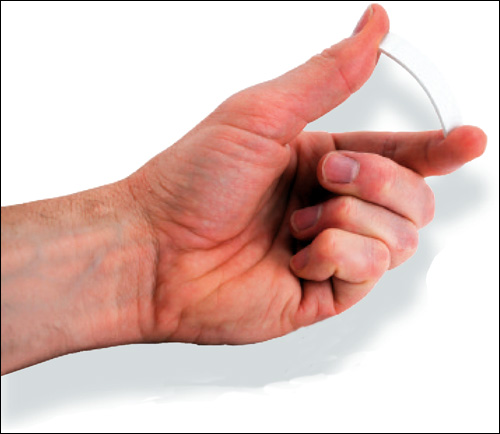
A jewelry retailer or gem dealer that has never had an item misplaced, lost or stolen can benefit from RFID’s labor savings, says Michael Liard, VP of auto-ID at VDC Research. “A jewelry store has to take inventory at least once a day, and may do it several times a day,” he says. “Doing that in a manual fashion is time-consuming and takes employees away from other tasks.” With RFID, an employee can quickly inventory tagged items by passing a wand or handheld reader over jewelry displays. Shelf-mounted readers in display or storage units can provide inventory information on demand. “Jewelry retailers are very interested in that,” he adds.
Some providers offer RFID-enabled pads or trays that salespeople can use to present an item to a customer. Some of these readers come with screens that can display information about the item.
Inventory management is one of what Liard calls the “layers” of value proposition for RFID in the jewelry industry—the many ways in which RFID can deliver an ROI. Another layer, he says, is access control. “Many times, display cases are individually locked for added security. With RFID, you can equip each employee with an access-control card that unlocks the case, so he or she can open it without having to dig out one of 10 keys for 10 cases.” That also lets management see how often employees are accessing cases, and who opened which case last. “There’s an additional level of security,” he says.
RFID in the retail jewelry industry is now in its “next wave” of interest, Liard says. “Historically, it’s been used in Europe,” he says. “Where you do get a lot of interest in the United States is in very high-end jewelers in key markets such as Las Vegas. But now that the industry is reducing costs, there’s an opportunity to benefit from RFID for your local mom-and-pop jeweler as well.”
Providers of RFID-enabled jewelry inventory-management solutions agree with this assessment. “Eight years ago, we had to describe what RFID was,” says Keven Peck, CEO of TracTech Systems. “Today, people are calling us because they see the need for RFID to control their inventories at a fraction of the cost. In a multiple store chain, just on store transfers, they quickly save the cost of installing the system.” But a single jewelry store will see its RFID investment pay for itself in “months, not years,” he says.
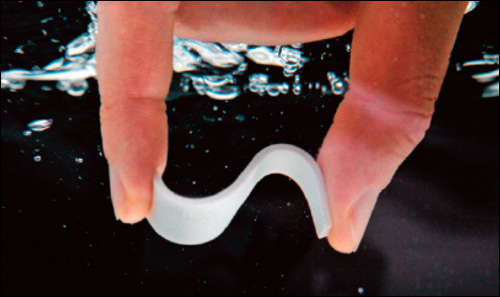
While Steinmetz and some other gem dealers and wholesalers are employing or investigating RFID, adoption so far has been greater at the store level, Liard says. But that will change. “What will drive RFID further up the supply chain will be requirements from jewelers to supply-chain partners that they deliver items with tags already on them,” he says. That’s because, while prices have dropped for RFID tags, there’s also cost associated with applying the tags to many tiny items. Gem dealers will feel pressure to take on that task, especially since tagging will also help their operations. “The farther back in the supply chain an item is tagged, the more visibility throughout the supply chain. That will help all the players along the way, especially with theft and diversion,” he says. “That will help fuel adoption.”
Peck, on the other hand, believes the compelling use case for gem dealers will drive rapid adoption in that part of the industry, which will, in turn, create added interest at the retail level. RFID providers have developed reusable tags that fit neatly into the paper parcels called “brifkas” typically used to hold loose diamonds, as well as RFID cabinets, tunnel-shaped readers and transportable microwave-style boxes that make tracking seamless. “Right now, I think the technology is perfect for manufacturers, distributors and diamond dealers,” he says. “A manufacturer has one or only a few locations, so it can install printers and readers and see benefits right away.” RFID’s ability to read many items in rapid succession is a big plus in the wholesale world, he says. “Once the programming is working, it doesn’t matter if I read 1,000 items or 100,000.”
In Pursuit of Accuracy
The jewelry industry presents a challenging environment for RFID technology. Accuracy is critical, yet it can be difficult to read many tagged items gathered together in very small spaces, often made partly or completely of RF wave-blocking metal. “If it’s not accurate, it’s not very useful,” says Justin Patton, managing director of the RFID Research Center at the University of Arkansas. “If you do RFID tracking for socks and you miss one, it’s not good but it’s not the end of the world.” But missing one high-end piece of jewelry or loose diamond is a very big deal, he adds.
To achieve accuracy, some providers have based their solutions on high-frequency RFID technology while others use ultrahigh-frequency. Proponents of UHF say it provides accurate read rates, and it’s the technology being adopted in the retail industry.
“HF has proven to be more accurate for a jewelry environment, in which pieces tend to be highly concentrated,” says Adrian Prezioso, CTO of TJS. “UHF is susceptible to metallic reflection of the radio waves, which can cause either dead spots in certain scanning areas or detect tags outside of the intended scanning area. In addition, HF scanners are less expensive, so there is a lower cost of ownership.”
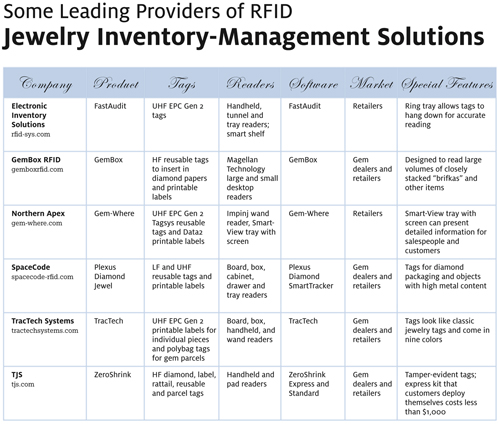
HF might make sense in some situations, Patton says, because it has fewer physics issues and direct interference problems. “It depends on what you’re trying to do,” he says. “HF has a shorter range than UHF, so it’s well-suited for a shelf antenna. But, he adds, UHF might be better for scanning jewelry with a handheld device.
SpaceCode offers both low-frequency and UHF technology, says CEO Craig Cook. LF delivers “100 percent accuracy,” he says. “We don’t place limitations on how the system must be used to ensure it works accurately. It simply works all the time, even in very challenging RFID jewelry applications.”
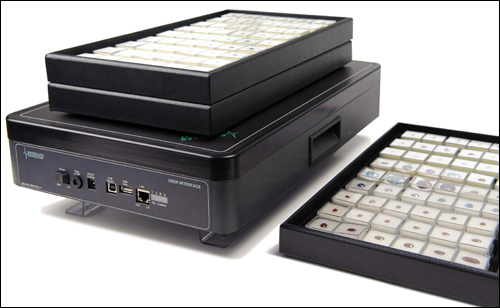
LF reads more slowly than HF or UHF, Patton says. “But the advantage is it doesn’t require directional antennas,” he says. “Low frequency is not the same physics; you can use a looped wire that reads when a tag crosses it. So it’s cheaper infrastructure—you can run a wire around a jewelry cabinet or an exit.”
Liard predicts UHF technology will take over the entire market eventually. “We’ve made tremendous strides in getting UHF to work around harsher materials such as metal,” he says. “We’re beginning to solve that, so it will be less of an issue going forward.”
Toward Widespread Adoption
Aesthetics counts in the retail jewelry industry. “Jewelers are precise about the look of the tags,” Peck says, noting that TracTech tags come in nine colors and different configurations to accommodate jewelers’ display preferences. Borsheims attaches TJS’ Cotton Thread tags to the inside of watchbands. A “rattail” tag, offered by several providers, is designed to hang away from the item, so it won’t get in the way when a customer tries it on.
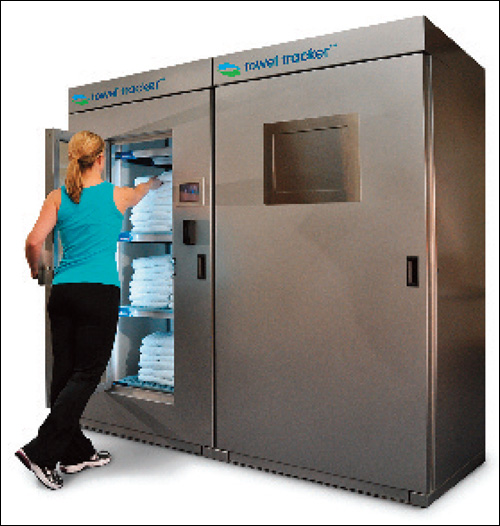
(Tageos developed UHF paper labels without plastic inlays, so they can be cut into different configurations to fit a variety of jewelry items. Cleor, a French jewelry retailer, worked with Tageos and several other vendors to deploy a custom inventory-management system, which it has rolled out to more than 60 stores; see Cleor Strikes Gold With RFID Solution.)
Other innovations include applications that can help jewelers increase sales. The RFID-enabled pads and trays used to present jewelry to customers, for example, can provide managers with information about which salespeople are showing which pieces, and which items are viewed most often. The data can be integrated with point-of-sale software, and that information can be used to analyze trends, says Gabriel Nasser, CEO of TJS. “It’s opened the jewelers’ eyes to say, ‘If I have this kind of data, my merchandising decisions will improve dramatically,'” he says.
Northern Apex‘s Gem-Where Smart View pad comes with an attached screen that can display detailed information about an item or suggest other pieces to go with it. “Put the tagged jewelry on the reader and the information pops up,” says Kevin Knuth, the firm’s business development manager. “It allows someone without a lot of training to know a lot about products, or it could be used directly with the customer.”
Because many of these applications come under the marketing umbrella, “operations and security people are no longer the only decision-makers on deploying RFID,” Nasser says. “You have the marketing and merchandising people very interested, and they get the CFO interested. When you have all these folks around the table making the decision, you get much better adoption and deployment.”
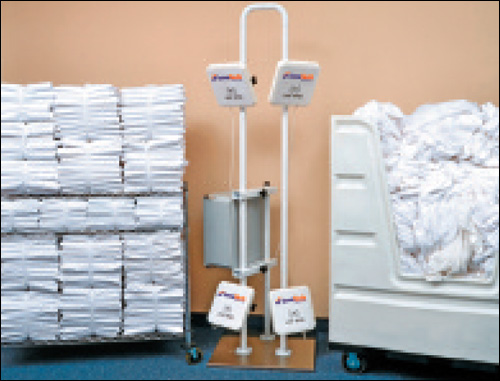
The adoption of RFID by department stores to improve inventory accuracy in their apparel and footwear departments is likely to impact the jewelry industry. “Retailers like Macy’s are starting with apparel, but will move down the product category to jewelry,” Liard says. “Everything will be RFID-enabled at some point.”
Knuth agrees, and says when that happens, manufacturers will be obliged to provide RFID-tagged items for these large chains. “So manufacturers will already be putting an RFID tag on everything, since they won’t want to do two tags,” he predicts (see Getting to the Tipping Point). “If I’m a jeweler, I can take advantage of that.” When most or all jewelry items arrive at stores already tagged, he says, deploying RFID readers will be a truly easy decision.


